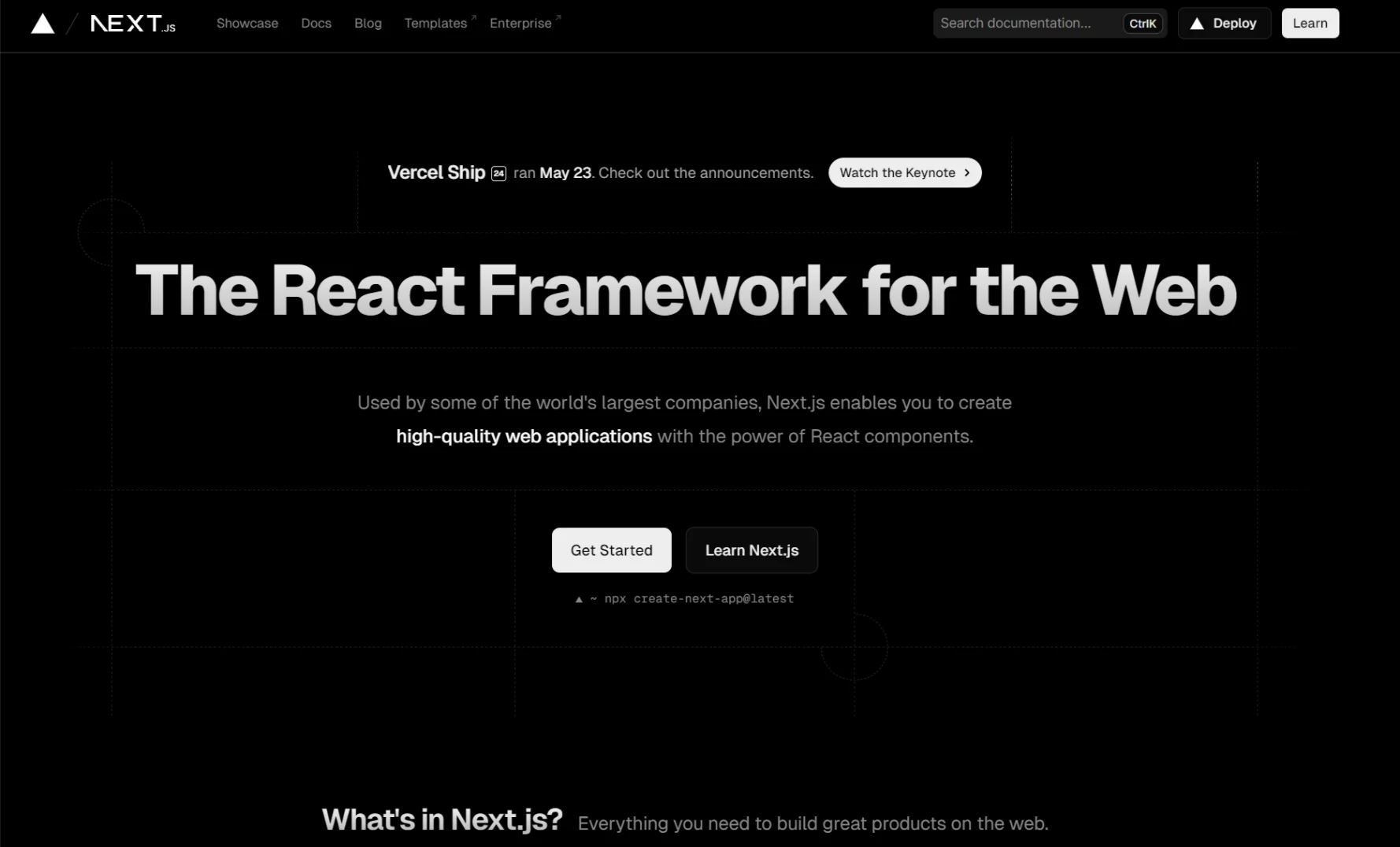A Note About Images: The images used in our articles are for illustration purposes only and may not exactly match the content. They are meant to engage readers, but the text should be relied upon for accurate information.
Are you ready to dive into the world of Next.js and uncover why it’s become a powerhouse in modern web development? Whether you’re a seasoned developer or just starting your journey, understanding Next.js can significantly impact your projects. In this comprehensive guide, we’ll explore 18 fascinating facts about Next.js that showcase its capabilities, benefits, and why it’s captured the hearts of developers worldwide.
Next.js is a powerful JavaScript framework built on top of React 1, designed to make server-side rendering and static web applications a breeze. Known for its user-friendly interface, performance optimization, and scalability, Next.js has quickly risen to prominence in the development community. Let’s unravel the magic behind this popular framework and discover why it might be the perfect fit for your next project.
1. The Essence of Next.js
Next.js is more than just another JavaScript framework. It’s a robust solution built on top of React, offering developers a seamless experience in creating server-side rendered and static web applications. Its user-friendly interface, performance optimization features, and scalability have made it a go-to choice for developers of all levels.
2. Performance Optimization at Its Core
One of the standout features of Next.js is its focus on performance optimization. The framework employs several techniques to ensure your applications run smoothly:
- Code splitting: Next.js automatically splits your code into smaller chunks, loading only what’s necessary for each page.
- Server-side rendering: This feature improves initial load times and enhances SEO.
- Static generation: Next.js can pre-render pages at build time, resulting in lightning-fast load times.
3. Zero Configuration Required
Getting started with Next.js is a breeze. The framework requires minimal setup, allowing developers to focus on building their applications rather than wrestling with configuration files. This “zero config” approach makes Next.js an excellent choice for both beginners and experienced developers looking to streamline their workflow.
4. Intuitive File-based Routing
Next.js simplifies routing with its file-based system. Pages are automatically associated with routes based on their file names in the pages directory. This intuitive approach makes it easy to organize and manage your application’s structure.
5. Built-in API Routes
Developers can create API routes directly within their Next.js applications. This feature facilitates easy integration of backend functionality, allowing you to build full-stack applications without the need for a separate backend server.
6. CSS Support Out of the Box
Styling your Next.js applications is straightforward, thanks to built-in CSS support. You can import CSS files directly from JavaScript files, simplifying the styling process and keeping your code organized.
7. Fast Refresh for Enhanced Developer Experience
Next.js includes a fast refresh capability that provides instant feedback during application editing. This feature significantly enhances the developer experience, allowing for rapid iteration and debugging.
8. Automatic Image Optimization
Images can often be a bottleneck for web performance. Next.js addresses this with automatic image optimization, reducing image sizes without compromising quality. This leads to faster load times and improved user experience.
9. Support for Internationalization
Building multi-language websites is made easier with Next.js’s support for internationalized routing. This feature allows developers to create global applications that cater to diverse audiences.
10. Comprehensive Documentation and Community Support
Next.js boasts extensive documentation with guides, tutorials, and API references suitable for developers of all levels. Additionally, a vibrant community provides support, knowledge sharing, and opportunities for developers to contribute to the framework’s development.
11. Regular Updates and Maintenance
The team behind Next.js is committed to keeping the framework current and reliable. Regular updates introduce new features, enhancements, and bug fixes, ensuring that Next.js remains at the forefront of web development technologies.
12. Adoption by Major Industry Players
Many large companies and renowned brands utilize Next.js for their websites. This widespread adoption showcases the framework’s reliability, scalability, and performance in real-world applications.
13. High Demand in the Job Market
Proficiency in Next.js is highly sought after in the job market. As more companies adopt this framework, developers skilled in Next.js find themselves with a competitive advantage and access to diverse web development opportunities.
14. Static Site Generation (SSG) Capabilities
Next.js supports Static Site Generation, allowing developers to generate complete static websites at build time. This feature is ideal for projects with static content, offering blazing-fast load times and improved security.
15. Server-side Rendering (SSR) for Improved SEO
With Server-side Rendering, Next.js can render pages on the server, improving initial load times and enhancing SEO. This feature is particularly useful for content-heavy websites and applications where search engine visibility is crucial.
16. Incremental Static Regeneration (ISR)
Next.js introduces Incremental Static Regeneration, a feature that allows developers to update static content without rebuilding the entire site. This combines the speed of static sites with the flexibility of server-side rendering, offering the best of both worlds.
17. Built-in TypeScript Support
For developers who prefer strong typing, Next.js offers built-in support for TypeScript. This enables the creation of more reliable and maintainable applications, catching potential errors at compile-time rather than runtime.
18. Versatility for Projects of All Sizes
Whether you’re working on a small personal project or a large-scale enterprise application, Next.js scales effortlessly. Its adaptability and efficiency make it a preferred framework for a wide range of web development needs.
FAQ About Next.js
Q: Is Next.js suitable for beginners?
A: Yes, Next.js is beginner-friendly thanks to its intuitive design and extensive documentation.
Q: Can I use Next.js for e-commerce websites?
A: Absolutely! Next.js’s performance optimization features make it an excellent choice for e-commerce sites.
As we’ve explored these 18 fascinating facts about Next.js, it’s clear why this framework has become a favorite among developers. From its performance optimization features to its support for advanced capabilities like SSG and ISR, Next.js offers a comprehensive solution for modern web development challenges.
Whether you’re building a simple landing page or a complex web application, Next.js provides the tools and flexibility to bring your vision to life. Its active community, regular updates, and industry adoption ensure that Next.js will continue to evolve and remain a relevant choice for years to come.
As you embark on your next web development project, consider giving Next.js a try. With its user-friendly approach, powerful features, and growing ecosystem, you might just find that it’s the perfect framework to take your development skills to the next level. Happy coding!






